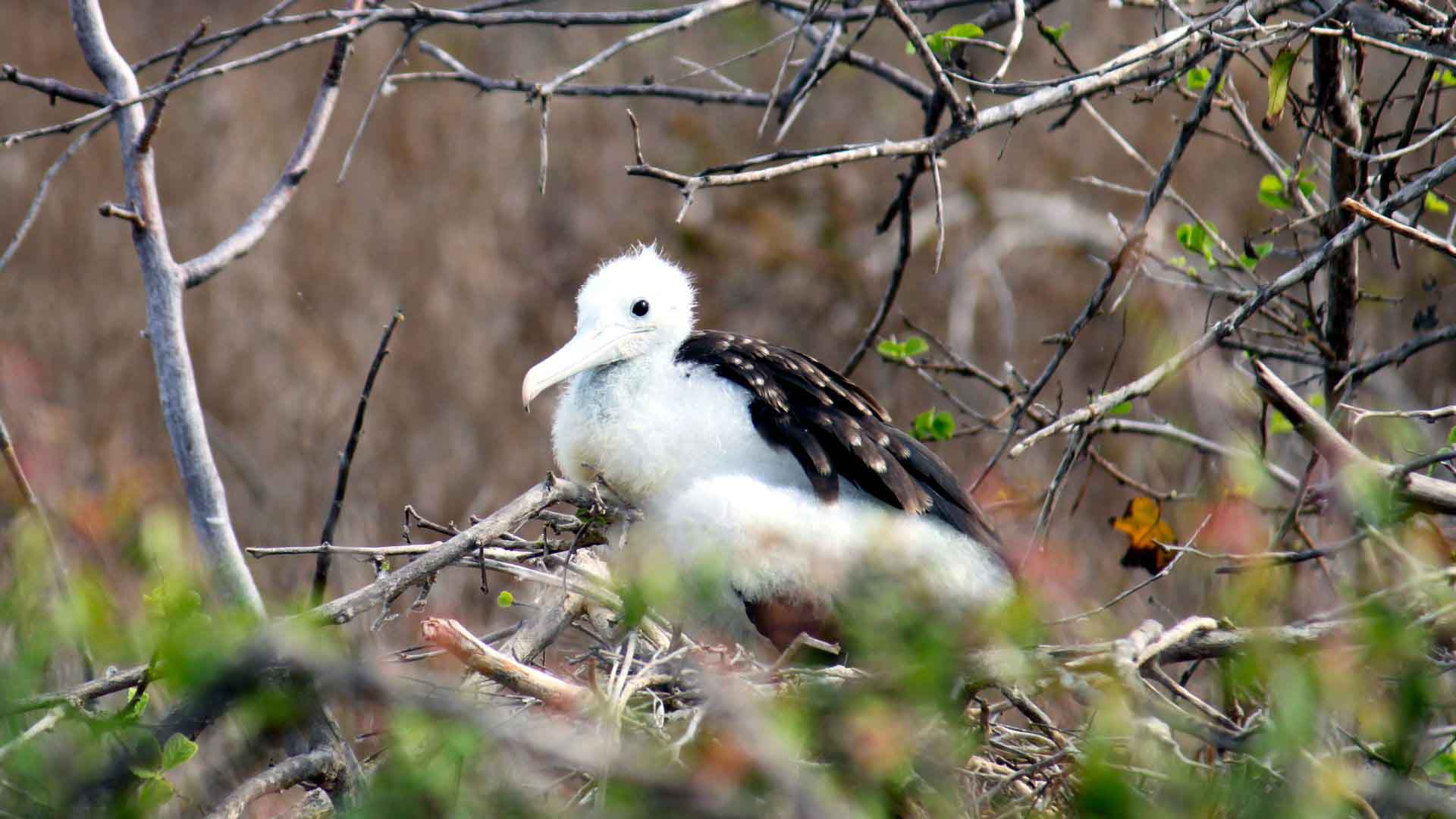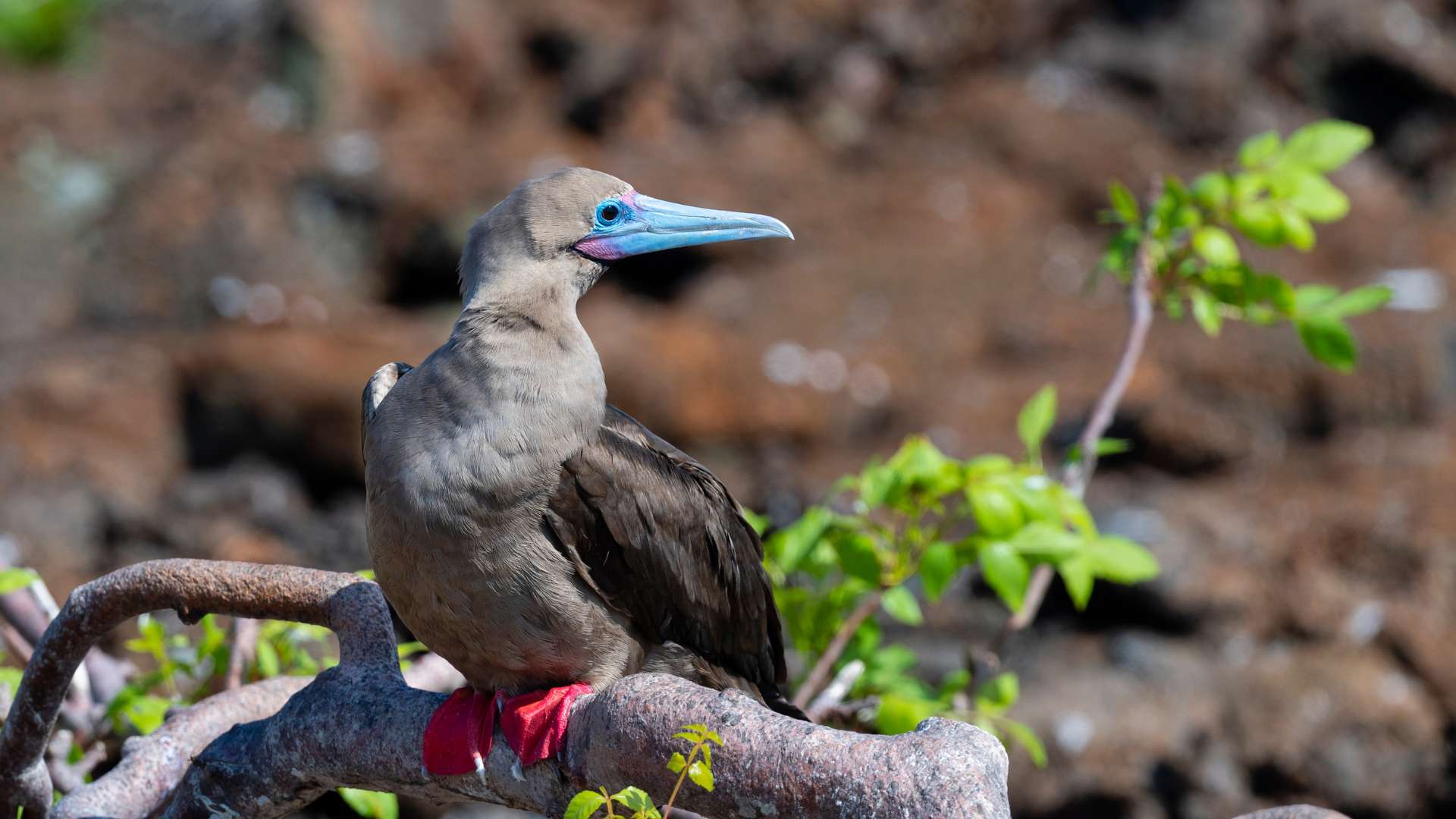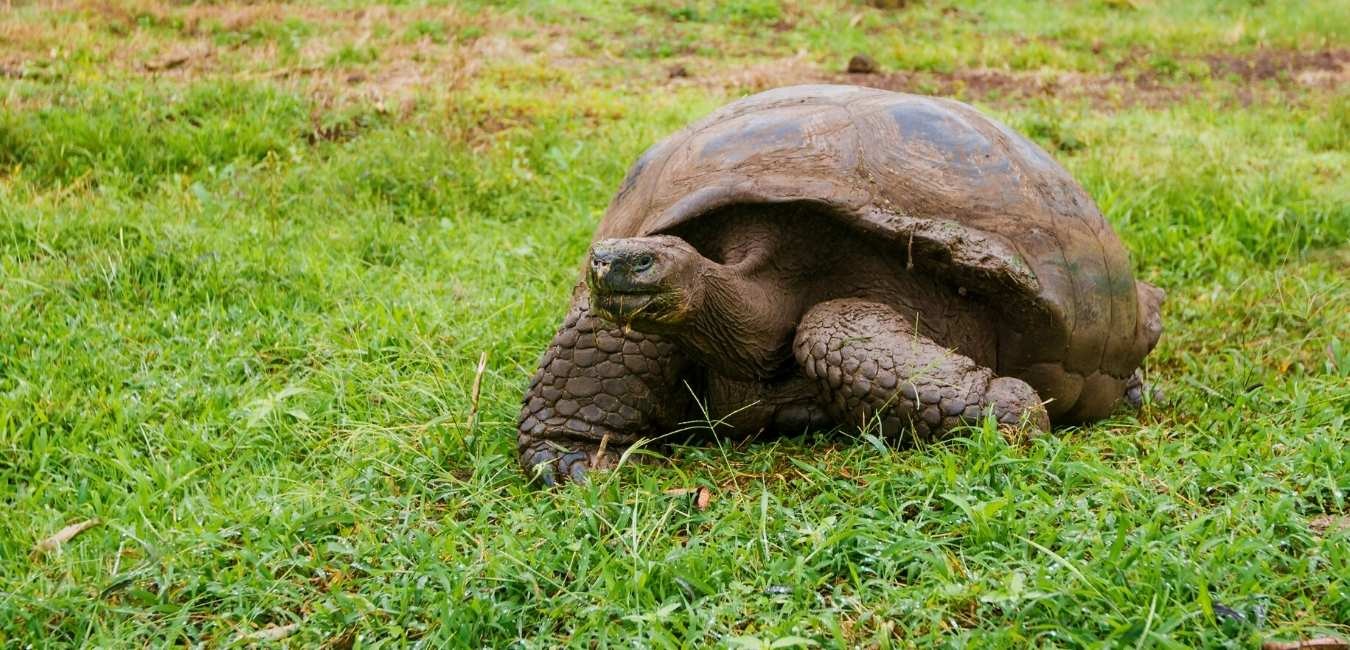Liveaboard boat trips to the south islands and tourist sites of Galapagos archipelago. This trip is affordable and focuses on grassroots nature travel. Floreana yachts are rustic and comfortable boats that can host up to 16 people.
8 day Galapagos budget friendly boat trip Floreana Yacht
Santa Cruz Island: Bachas Beach
It is located in the northern part Santa Cruz Island. It consists of two beaches with a combined length approximately 1 km. Las Bachas Beach is the result of two abandoned American Army barges left on the beach during the Second World War. The first settlers couldn't pronounce the name correctly in English and Las Bachas Beach was born. The coastal zone is the predominant vegetation. It is the primary nesting site for sea turtles (Chelonia medas) on Isla Santa Cruz. This is a great place to spot flamingos as well as other migratory or aquatic birds.
North Seymour Island
North Seymour is flat because it was an island that was uplifted and not volcanic. Due to its ideal nesting areas, you can expect to see large numbers of spectacular Frigate birds. Blue-footed boobies will perform their courtship dances in the open areas while swallow-tailed and gulls rest on the outer shore. You can also see sea lions or Marine iguanas on the beach.
Santa Cruz Island: Dragon Hill
Dragon Hill, located in northern Santa Cruz Island, is a visitors' site that consists of a trail running through three environments and measuring 1,600m long.
It was named because it was the only place on Santa Cruz Island that had land iguanas, Conolophus subcristatus, in a healthy condition in 1975. The Galapagos National Park, Charles Darwin Foundation and others initiated a program to preserve land iguanas in the same year. The North Seymour iguanas (originally from Baltra), the iguanas at Cartago Bay (Isabela Island), and Santa Cruz Island iguanas were all studied before being transported to special pens that allowed them to breed in captivity. By 1979 first iguana were born.
To keep them away from wild dogs, the entire Cerro Dragon iguana colony was moved to Venice Islet. To provide a suitable environment for nesting, soil was also taken from Cerro Dragon's base. To prevent predator dogs crossing to Santa Cruz Island, it was necessary to create a barbed wire fence that separated the Venice Islet and Santa Cruz Island. This is to keep them from entering the Islet which is separated by narrow channels. In 1990, Cerro Dragon received several iguanas from Venice that had been reproduced.
Cerro Dragon is currently without dogs. The Galapagos National Park Service monitors cats and donkeys constantly.
Artemia salina shrimp is found in the lagoons of this site. They are the same food as flamingos, but at certain times of the year they are more plentiful and the population is higher. The lagoons' water becomes too sweet during rainy seasons, which causes a decline in shellfish population and a decrease in shorebirds.
Charles Darwin Research Station
Charles Darwin Research Station was established more than twenty years ago to support the National Park Service's efforts to save Galapagos' wildlife. The station also plays an important role in monitoring and assessing conditions on the islands. You will still find buildings today housing the scientific areas, libraries, and the homes of scientists and tortoise keeper. The station museum has a facility to raise tortoises. This is part of a larger project to increase the population. The station's breading program also houses the famous lonesome George.
El Chato
It is a rare opportunity to view the giant land tortoise in their natural habitat. After seeing them in the station's breading program, you can now watch them bathe and eat in the wild, depending on the season. This area is in Santa Cruz's highlands, and it is covered with transition zone vegetation. Walking to the reserve can be a great place to see ground birds, ground and tree finches, cattle egrets, and sometimes galapagos rails.
Floreana is one of the oldest islands. It has the most fascinating human history. There are stories about marooned whales, colonists, prisoners, and colonists. It also has stories about bizaree disaperances. And even murders. It contains many extinct volcanic cones, and is home to extensive scrubby vegetation.
Cormorant Point
Two very different beaches are available. The landing beach is volcanic in origin and has olivine crystals that give it a greenish tint. The carbonate beach is extremely finely sand-white and formed from the erosion coral skeletons. It is home to green sea turtle nesting sites.
Post Office Bay
It is significant for its human history. James Colnett, a captain of a whaling ship, created the wooden post barrel in Floreana in 1793. The archipelago was frequented by whaling ships that were often offshore for up to two years. Outbound ships dropped off letters at the cape, and ships returning home would mail them. Over the years, thousands of ships have stopped at Post Office Bay to receive and send mail. You will have the opportunity to take part in this incredible postal service. You will receive letters that you can take home or mail to the intended recipients. Additionally, you have the option to drop off letters yourself.
Suarez Point
Espanola is the island with the most wildlife. It is the southernmost. Suarez Point is home to Blue-footed boobies as well as Nazca boobies and swallow-tailed Guls. Oystercatchers are also found here. This site is home to some of the most diverse wildlife in the Galapagos Islands. This area is known for its unique copper-red marine iguanas.
Gardner Bay
Beautiful white sand beach with turquoise waters. It is possible to just relax and watch the extrovert sea lions and mockingbirds.
Center for Breeding
This is how the natural phenomena that led to the creation of the Galapagos Islands are explained. These explanations explain how natural processes such as volcanic eruption or marine current locations led to the incredible islands you are currently visiting.
Lobos Island
It is known for its large population of fur sea lions as well as sea lions, and its name implies. A nesting ground is also available for the great frigate bird, as well as a few blue-footed boobies.
Santa Fe Island
The island offers the rare opportunity to view the hybrid iguana which is a combination of marine and land iguanas. You can also see a rare prickly pear forest.
South Plazas Island
It is a beautiful island that has been elevated like Baltra. More than 1000 sea lions live on the island in 10 harems. Each harem is supervised by a male. Opuntia Cactuses are a characteristic of this island, as is the sesuvium and sesuvium vegetation. This island is home to red-billed tropicbirds and swallow-tailed Gulls.
Black Turtle Cove, a small lagoon of mangroves, is one the most stunning marine sites. It is home to many marine species, including sharks, spotted and stingrays. It is also a favorite breeding ground for the sea Turtle. You can also see blue-footed and finches feeding, as well as herons, finches, and other wildlife. The site is not accessible by land, but can be viewed from small boats.
Your flight home will take you back to Baltra Island. We hope you enjoy your time with us.




Highlights
- Explore all the Islands in the South of the Galapagos archipelago
- Visit Punta Suarez and walk by the blow hole, nesting masked boobies and the Albatross realm
- Visit the olive green sand beach at Punta Cormorant
- Observe the giant cacti on South Plazas and Santa Fe islands